Why Do Some Animals Undergo More Changes During Domestication?
The animals changed past proximity to humans
(Paradigm credit:
Alexandr Zotov/Getty Images
)
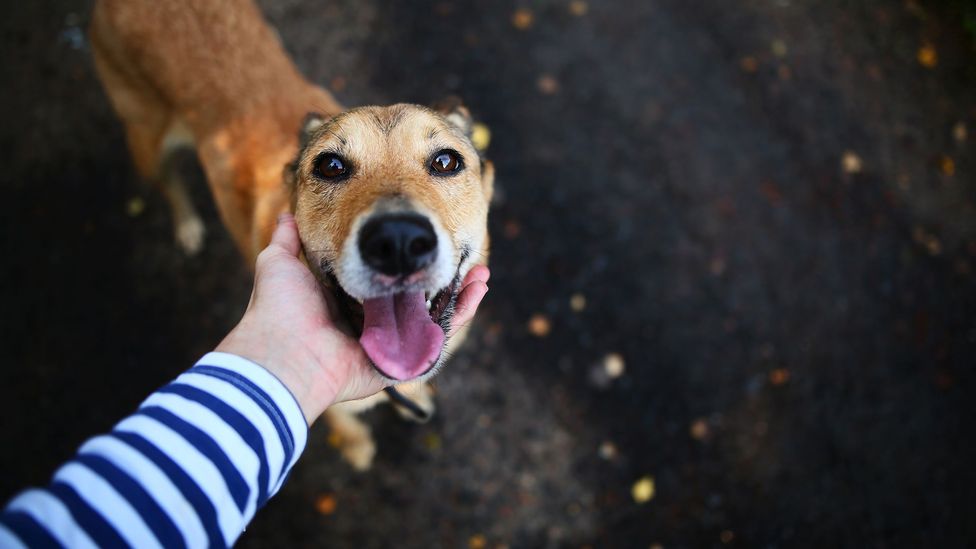
It's non just domestication that has inverse animals – just sharing their environs with humans has radically contradistinct the behaviour of some species.
A
Around eight,000 years ago, nomads in Southeast Asia began to keep reddish junglefowl, a tropical bird with bright plumage that yet inhabits the forests and mangroves of southeast Asia. The descendents of these birds, chickens, tin be institute on farms – and dinner plates – all over the world.
In his lab at Linköping University in Sweden, Per Jensen, a professor of ethology, is trying to recreate this domestication procedure in record time. By breeding ruby-red junglefowl that show the least fear of humans, in just xi generations he has seen a noticeable departure.
His experiments also bear witness the states just how dramatic an effect proximity to humans can have on the behaviour of animals.
"If you walk into a pen of wild junglefowl they try to escape and motion to the far end of the pen, flapping their wings in distress," says Jensen.
"The tamer birds nosotros have bred come up up to you and peck your shoes – they want to collaborate with humans."
You might also similar:
- The reasons behind pets' most revolting habits
- The remarkable ways animals can count
- Does city life make animals smarter?
The junglefowl take inverse in other means too. They are more sociable with their flock mates and tend to be more interested in exploring their surroundings.
They are as well bigger, lay larger eggs and have smaller brains than their wild cousins - differences that are also seen in chickens.
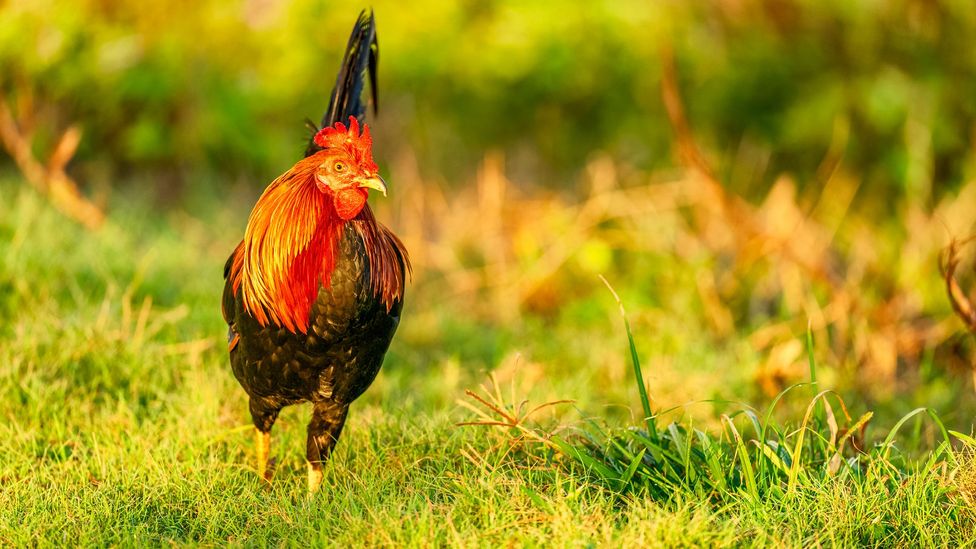
Jungle fowl tin can be bred from wild to tame in just 11 generations, researchers have found (Credit: Don White/Getty Images)
Humans have a long history of domesticating animals, a process that has spanned thousands of years. Charles Darwin was the first to notice that domesticated animals, similar cats, dogs and pet rabbits share sure traits in addition to 'tameness'. Pets tend to accept floppier ears and curlier tails than their wild ancestors. They too have smaller jaws and teeth, white patches on their fur and breed more frequently. This phenomenon is known as 'domestication syndrome'.
The most famous example of domestication syndrome comes from a 1959 experiment, in which Soviet biologists Dmitri Belyaev and Lyudmila Trut took a few dozen wild silver foxes from a Siberian fur farm and began selectively breeding the tamest animals.
Remarkably, within simply a few generations the scientists had bred docile and friendly foxes. It wasn't merely their behaviour that had changed; the foxes looked unlike too. They had shorter muzzles, floppy ears, piebald spots and curly waggy tails.
Although the reason for this is unknown, a pop theory is that when humans breed animals for tameness, they may inadvertently select individuals with underdeveloped adrenal glands. Adrenal glands are responsible for the "fight-or-flight" response, so animals with smaller adrenal glands are less fearful.
The stem cells in the embryo that go on to form the adrenal glands also develop into paint cells and parts of the skull, jaws, teeth, and ears. Then domestication syndrome might in fact be an accidental side outcome of breeding tamer animals.
In Jenson's junglefowl, one of the biggest differences between wild and tame birds is the size of the brain stem, an aboriginal part of the encephalon involved in stress reactions.
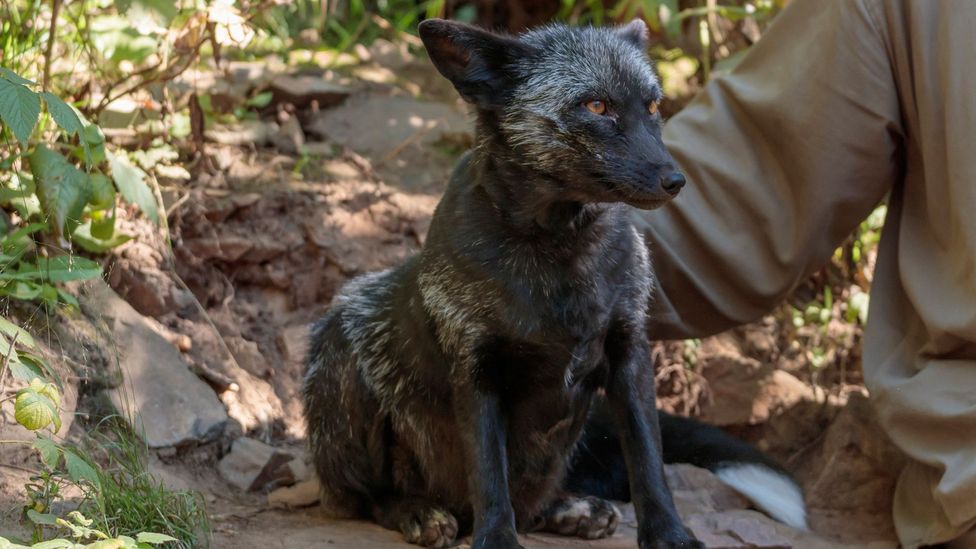
Domesticated foxes, similar this black i, may exhibit physical traits such every bit floppier ears and shorter snouts (Credit: Jef Wodniack/Getty Images)
"The brain is a very costly organ, consuming 25-xxx% of free energy in mammals," says Jenson.
"If you lot select animals that grow faster and have a higher reproductive output, you are putting demands on the mode those animals use free energy. Chickens don't need to cope with a lot of complex stuff that wildlife do, so they can employ that energy to increase growth and reproduction instead."
Domestication syndrome may not be limited to but animals humans have deliberately bred either. The firm mouse probably crept into its first pantry 15,000 years ago, co-ordinate to a study past Lior Weissbrod, a zooarchaeologist at the University of Haifa in State of israel. Weissbrod uncovered mouse teeth in settlements left past the Natufian culture of hunter-gatherers in the eastern Mediterranean from around this fourth dimension.
Since then, the mouse has travelled to every corner of the earth, making its home wherever humans live. And there's show that co-habiting with humans for so long has changed the very DNA of mice.
Researcher Anja Guenther at the Max Planck Institute in Germany gathered 150 specimens from three different subspecies of house mice. Each of the subspecies began cohabitating with humans at unlike times in our evolutionary history. Mus muscle domesticus began living alongside humans 12,000-15,000 years ago, M. musculus musculusouth has lived with usa for 8,000 years, and Chiliad. musculus castaneus struck up a relationship with us only recently – nigh 3,000 to 5,000 years ago.
Guenther bred the mice for several generations in the laboratory. She then took the descendants of the original mice and tested them with seven unlike food puzzles. Inside each puzzle was a mealworm, which the mouse could simply get by pushing or pulling a lid, extracting a ball of newspaper from a tube or opening the window of a Lego house.
Incredibly, mice whose ancestors had lived alongside humans the longest were the best at solving food puzzles.
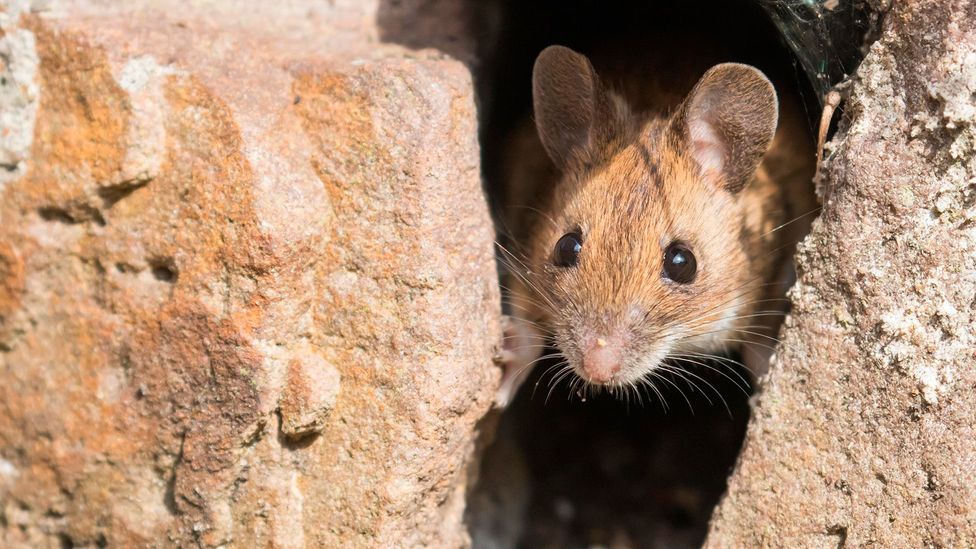
Our attempts to hide food from mice has made them better at solving puzzles, inquiry suggests (Credit: Wilfried Martin/Getty Images)
"It must be evolution at play because the animals nosotros used had been kept under standard laboratory atmospheric condition over generations," says Guenther.
"The mice nosotros tested had never lived with humans, simply their ancestors had. Living close to humans has altered the mice's genetic makeup."
Guenther believes that house mice evolved to become better at problem solving considering humans hid our food from them. This boxing of the minds fabricated mice craftier over time.
"It's like an arms race. As nosotros started to hide our food from them, they had to be more innovative to find information technology."
Although living shut to humans may take made some animals (like the house mouse) smarter, it may take had the opposite event on the fruit fly,Drosophila melanogaster.
D. melanogasterprobably first shacked upwards with humans at to the lowest degree 12,000 years agone when, attracted to the smell of fruit, it flew into the caves of ancient people living in southern Africa. The flies so proceeded to follow usa and our garbage around the world.
Over a century ago, these insects were chosen equally genetic models to exploit both their short lifetimes and ease of breeding. Ever since,D. melanogasterhas become an indispensable lab model used to accost a huge range of biological questions.
Anecdotally, it is well known amongst geneticists working with fruit flies that lab strains are far less active than their wild cousins. Catching an escaped fly that has been reared in the lab takes relatively fiddling skill compared to capturing flies buzzing effectually a glass of Cabernet Sauvignon.
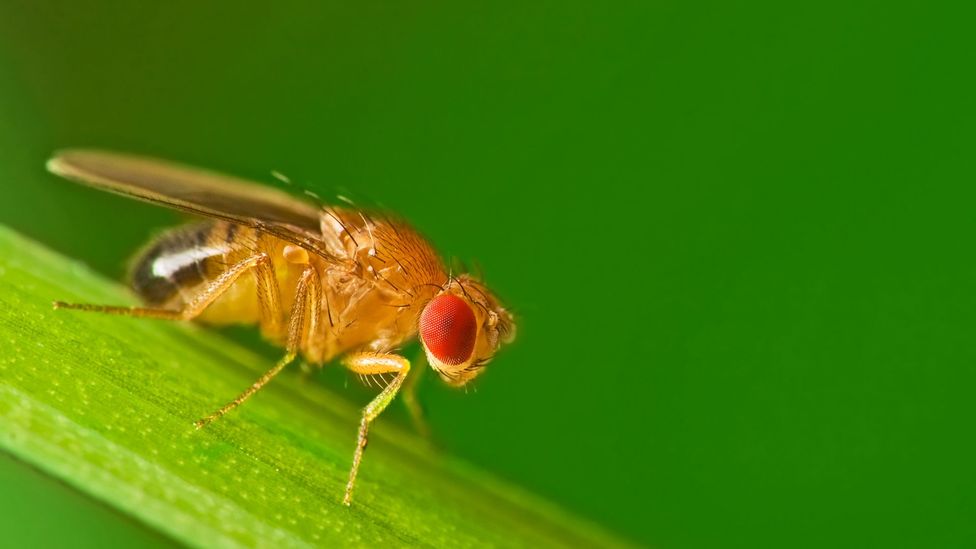
Successful escapes by smarter fruit flies may have left scientists breeding from a less intelligent pool of lab subjects (Credit: Getty Images)
"Anyone who has worked with lab flies knows that if one escapes the vial it is very like shooting fish in a barrel to take hold of it, you just tap it on the head and it falls downward," says Rob Kulathinal, an evolutionary geneticist at Temple University in Philadelphia.
To find out if there was anything more going on, Kulathinal compared the genomes of wild drosophila and laboratory flies. Non only did he confirm that lab strains are significantly less active and interactive with other flies than their wild cousins, he also found evidence that over the final 50-100 years, flies living in the lab accept undergone rapid evolutionary changes.
Rather than finding changes in just i or two genes, Kulathinal found changes beyond a whole complement of genes, specially those involved in forming new neurons in the brain. These changes could become some way towards explaining lab flies' unlike behaviour.
We don't know why this happened, but Kulathinal has an interesting theory.
"In research labs you take to transfer your flies into a different container every two weeks. When you flip the flies, the fast ones escape and the impaired ones remain. So over generations you lot end upwards selecting for slow, dumb-witted flies every bit opposed to faster ones that tin can escape."
So what unites the dog, craven, fox, mouse and fly? Whether they have chosen to or not, each have become inextricably linked with people. In sharing our lives and scavenging our leftovers, each of these species has had to overcome a fearfulness of humans to survive.
"When you start thinking near the initial phases of domestication going back thousands of years, the absolute first footstep must have been a reduced fear of humans, as fearful animals can't thrive and reproduce," explains Per Jenson.
What our hunter gatherer ancestors couldn't accept known, is that a host of other changes would piggyback on the 'tameness' ride for free.
--
Join one million Future fans by liking us on Facebook , or follow us on Twitter or Instagram .
If you lot liked this story, sign upwards for the weekly bbc.com features newsletter , called "The Essential List". A handpicked selection of stories from BBC Future, Civilisation, Worklife, and Travel, delivered to your inbox every Friday.
Source: https://www.bbc.com/future/article/20210805-the-animals-changed-by-proximity-to-humans
Posted by: gentilelovent.blogspot.com

0 Response to "Why Do Some Animals Undergo More Changes During Domestication?"
Post a Comment